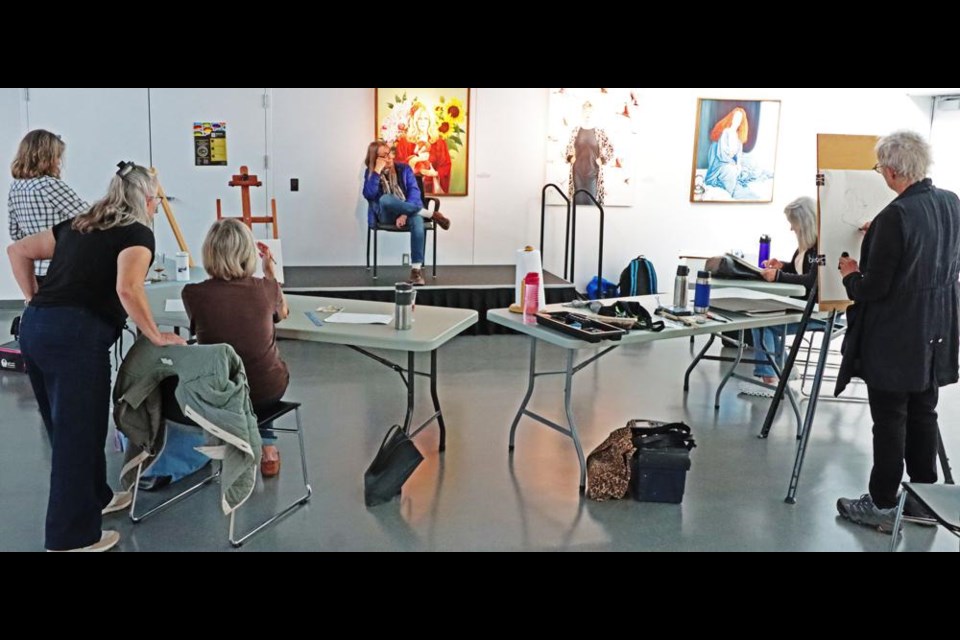WEYBURN - Artist Iris Hauser seeks to celebrate the strength and creativity of older women in her exhibit currently showing at the Weyburn Art Gallery, she told an audience on Friday evening, including a couple of the models she used for her paintings.
The exhibit, called “Crone Ascendant: In Praise of Older Women”, showcases a number of older women, some realistically painted and others with symbols of their talents and passions.
The Saskatoon-based artist gave a talk about some of the women behind her paintings, and invited the audience to speak with the models who were present at the reception, held as the inaugural event for Weyburn’s Culture Days activities, on from now until Oct. 12.
She said she wanted to paint women who inspired her, and who were older, as the tendency in today’s culture is not to value older people.
This was partly why she used the term “crone” for her exhibit, as many people understand that word to mean someone who is used up and no longer of any real value to society.
The women depicted in her portraits “are not dried up in any way” as they are volunteers or work in their own fields, “so I really wanted to celebrate that.”
“As I went forward, I just want to celebrate ordinary women … I’m really impressed by all of these women. I did paint a couple of people I hadn’t met before, but most are people I know quite well,” she explained.
Noting some of the paintings were realistic and others had surreal elements, Hauser said the paintings are a collaboration between herself and her subject.
“I try to bring out their personality as best I could, and I really try to show who they are,” said Hauser, noting the subjects included her mother, her sister, and a number of women who are artists or volunteers who seek to make life better in their communities.
One of the models was sculptor Christiane Stollofen, who also stayed over to Saturday to be her live model for the portrait-drawing class. Stollofen spent about 40 years living in Africa, learning how to use the tools she could get there, and woods that are unique to countries like Botswana and Zimbabwe, like ironwood.
Hauser had two different portaits in the exhibit of the sculptor, both showing different sides. One was realistic, showing her with a sculpture made of ironwood and displaying some of the tools she used to make it, and the other was more surreal, including an owl, along with a sculpture.
“I felt I had to show more than one side of her,” said Hauser. “All of these women have their own story. They’ve been a tremendous inspiration to me, and are women coming into their own power.”
Another portrait was of an Indian woman in a sari, Prema Ranganathan, with a variety of food dishes on display in front of her. She was also present at the reception, along with some of her family members from Saskatoon.
Hauser noted this woman, in spite of С����Ƶ legally blind, is very busy in her community, providing food to shut-ins, and doing a cookbook with the proceeds going to the CNIB.
“She was very inspiring to me, and was one of the few models I did not know before,” said Hauser.
She noted this is the first showing anywhere of her exhibit, and wanted to address the issues around ageism with her works. Hauser pointed out that in some cultures, older people are valued for their wisdom and insights, but it doesn’t seem to be the case in this culture.
As she gets older, it’s getting harder for her to find places where she can exhibit her works, as many galleries want to feature new young artists, so she appreciated the opportunity to showcase the paintings at the Weyburn Art Gallery.





